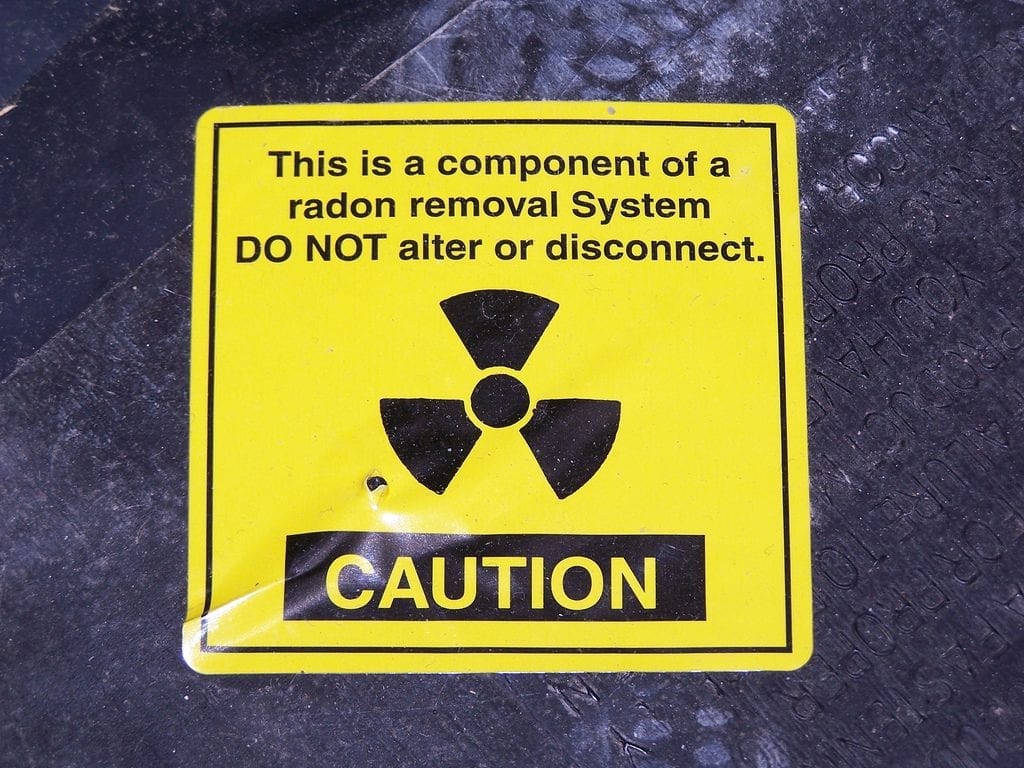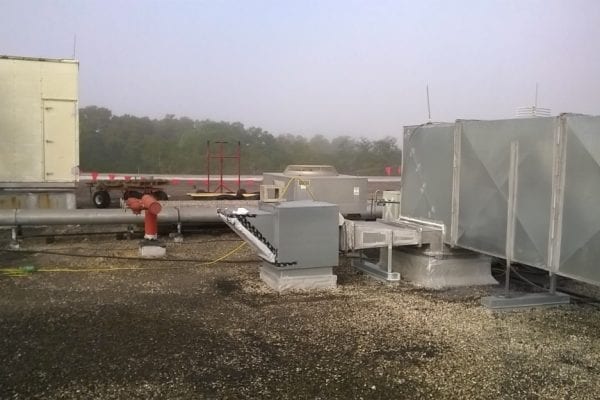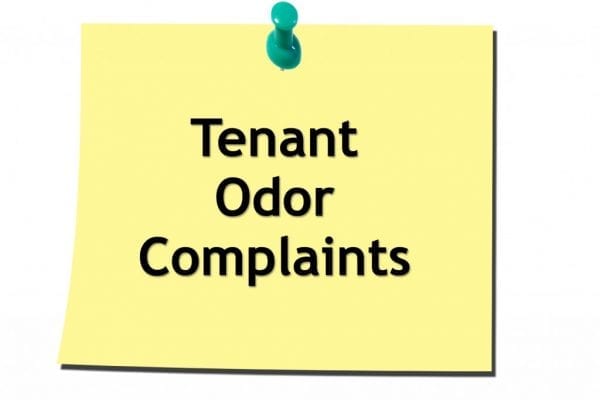Radon gas causes more than 20,000 lung cancer deaths in the U.S. each year, more deaths than the next two building-related deaths combined: falls in the home, and home fires. And while radon is at its most dangerous in living spaces, commercial building owners and managers, as well as some business owners, may be liable for testing and remediation as well.
What Radon Is
Radon is a naturally occurring radioactive gas that is released by certain rocks, soil, and water. While it is harmless in the concentrations usually found outdoors, it can build up in homes and places of business to dangerous levels. In fact, it is the second leading cause of lung cancer, behind cigarette smoking.
Contrary to the usual perception, radon is present in every area of the United States, and can vary significantly even between two buildings sitting next to each other. Usually, radon is released from rocks and soil below the building, and leaks into the building through cracks in the foundation or other entry points. For this reason, it is most common in areas of the country with geology that contains large amounts of radon-emitting materials, but it can be present anywhere. It can also be found in water and, in some cases, building materials such as granite counter tops or the fill dirt used to prepare a site for building.
Why Commercial Building Operators and Businesses Should Care
Radon exposure is usually seen as a residential problem, because it is most dangerous when vulnerable individuals are exposed to high concentrations on a daily basis over a long period of time. However, the state of Florida has determined that certain types of commercial buildings and businesses are responsible for testing and mitigating radon exposure in order to protect children and the elderly, who are most susceptible to its dangers.
In particular, buildings and businesses that cater to children and the elderly, and that contain the same individuals from these populations over a long period of time, are subject to regulation. This includes:
- Schools (Public & Private) K-12
- State Owned/Stay Operated Buildings
- Daycares
- Foster homes and other residential care facilities for children
- Assisted living facilities
- Memory care for the elderly
- Long term care facilities
- 24-hour care facilities (Hospitals)
GLE has provided radon services to over 100 healthcare facilities in the past five years
If your building falls under one of these categories, you may be subject to regulation before construction, before obtaining a license to operate, or when a problem arises. If your requirement includes inspection before construction or occupancy, you will receive a letter from the state explaining your obligation. However, just because you don’t receive that letter, doesn’t mean you aren’t subject to the regulations.
For example, private schools are not required to certify a radon-free environment prior to operation, but they are required to maintain a radon-free environment during operation. Often, these properties only find out they have a problem when someone brings it to their attention, typically when applying for state funding, and it can become a major public relations problem and subject them to lawsuits.
It pays to find out in advance whether your property is subject to these regulations, and to comply with them in a proactive manner.
Clients GLE has served:
- AdventHealth
- Indian River County Hospital District
- Northeast Florida State Hospital
- Department of Veterans Affairs
- Emory Healthcare
- Jackson Memorial Hospital
- Mt. Sinai Medical Center
- UF Health-Shands Jacksonville Medical Center
- Winter Haven Hospital
Florida Radon Requirements
Many states have separate regulations, which can be found on the EPA’s website. In Florida, where our headquarters and many of our clients are located, the requirement is to test and maintain average radon levels below 4 picocuries per liter (pCi/L). In some cases, the requirement is extremely simple to meet, while in others, it may require professional assistance. Here are the steps you’ll take.
Step one: Initial Radon Test
Radon test kits are available for purchase at any construction hardware or home improvement store. Check that the test kits have undergone proficiency testing through either the National Radon Proficiency Program, or the National Radon Safety Board. Alternately, you can hire a licensed radon professional to conduct the initial test. The test will usually be complete in about 48 hours. If the initial test comes back showing radon levels below 4 pCi/L, you’re done. Submit the results and/or document them for future reference, and pat yourself on the back.
Step Two: Further Testing
If, on the other hand, your test comes back above the threshold, then you are allowed to run a confirmatory short-term test. Many owners opt to bring in a radon professional at this point. Your radon professional will typically run a second test. The reason for a second test is that weather conditions and other variables can cause a spike in otherwise normal radon levels. If the second test comes back below the threshold, then once again, you are done.
If the result is still above the 4 pCi/L level, then your testing professional will run a third test to measure average levels. This test will usually take place over several months, in order to establish a long-term average. If the average is below 4 pCi/L, then once again, you are done. Submit the results, and rest easy.
Step Three: Remediation Design
When unacceptable levels of radon are discovered, then it is recommended to bring in a professional to design a remediation plan. This may be the same as the professional who conducted the tests, or you may choose another licensed provider.
Radon remediation may include a barrier inside the foundation to prevent radon infiltration, a means of venting the radon gas out of the building through pipes, removal of offending materials, and/or modification of the heating and cooling systems of the building. Your solution will depend on the unique conditions of your property.
Step Four: Remediation
With a remediation design in hand, you can hire a trusted contractor or bid the job out. It bears noting that pre-construction remediation is generally cheaper than retrofitted remediation. For that reason, it’s worth investing in testing and remediation planning as early in the process as possible.
For more information on GLE’s radon services, visit our radon page.
Are you looking for a reliable radon expert to inspect your buildings or design remediation? Contact us today.
Our geographic footprint enables us to deploy local teams to most Southeastern U.S. locations within 24-hours






